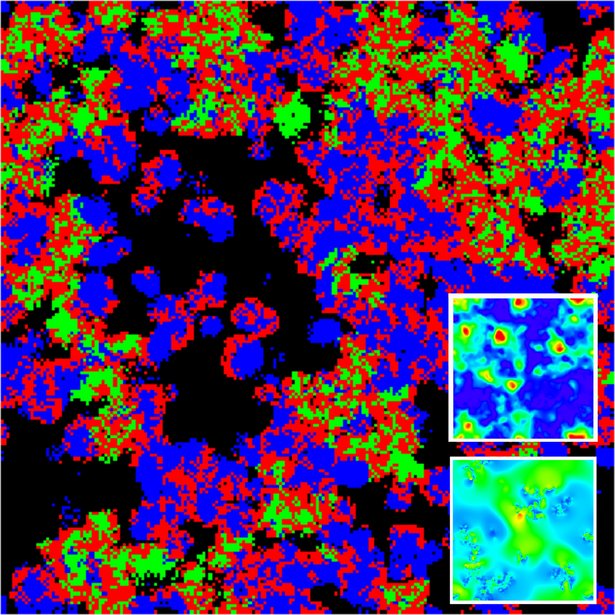Microbial Community Modelling
Microbial communities in natural environments are composed of a diverse array of functionally distinct individuals. These communities are not just simple gatherings but intricate networks where microbes interact in myriad ways, including direct competition or predation, and more subtle interactions like metabolite exchange. These interactions are pivotal in driving the community’s metabolism and influencing the ecosystem’s behavior across ecological and evolutionary timescales. Such dynamics play a crucial role in determining the system’s response, resilience, and resistance to environmental changes. However, understanding these interactions and their outcomes, which often transcend the sum ofthe properties ofindividual organisms and lead to emergent collective phenomena, remains a complex challenge.
Our methods, at a glance:
- Individual-based microbial community modelling
- Co-occurrence networks in environmental samples
- Computational models for molecular inter-species interactions
- Computational prediction of phenotypic roles of bacterial species
- Steady-state modelling of the metabolism of species and microbial communities
At CeMESS, we use mathematical modelling as a tool to explore the underlying mechanisms that govern the dynamics and functioning of these complex microbial communities. Our approach involves various types of mathematical models, each designed to shed light on different aspects of microbial life. We use individual-based modelling to simulate interactions, both competitive and synergistic, among microbial decomposers within structured micro-environments. This helps us understand how system properties emerging from these interactions influence overall community behavior. In addition, we also explore microbial interaction networks. Using network models based on Lotka-Volterra dynamics and other approaches like time series analysis, we evaluate how diverse interactions affect community properties, like stability and resilience. Furthermore, by harnessing the power of meta-omic data, we’re able to predict the structure of metabolic pathways, phenotypic roles, and growth rates of various species in microbial communities. Our steady-state metabolic modelling extends this understanding, predicting how these communities respond to changes in nutrient availability and other critical factors, such as microbiome host influences. This comprehensive modelling approach at CeMESS is integral to advancing our understanding of microbial community dynamics and their environmental (and medical) implications.
